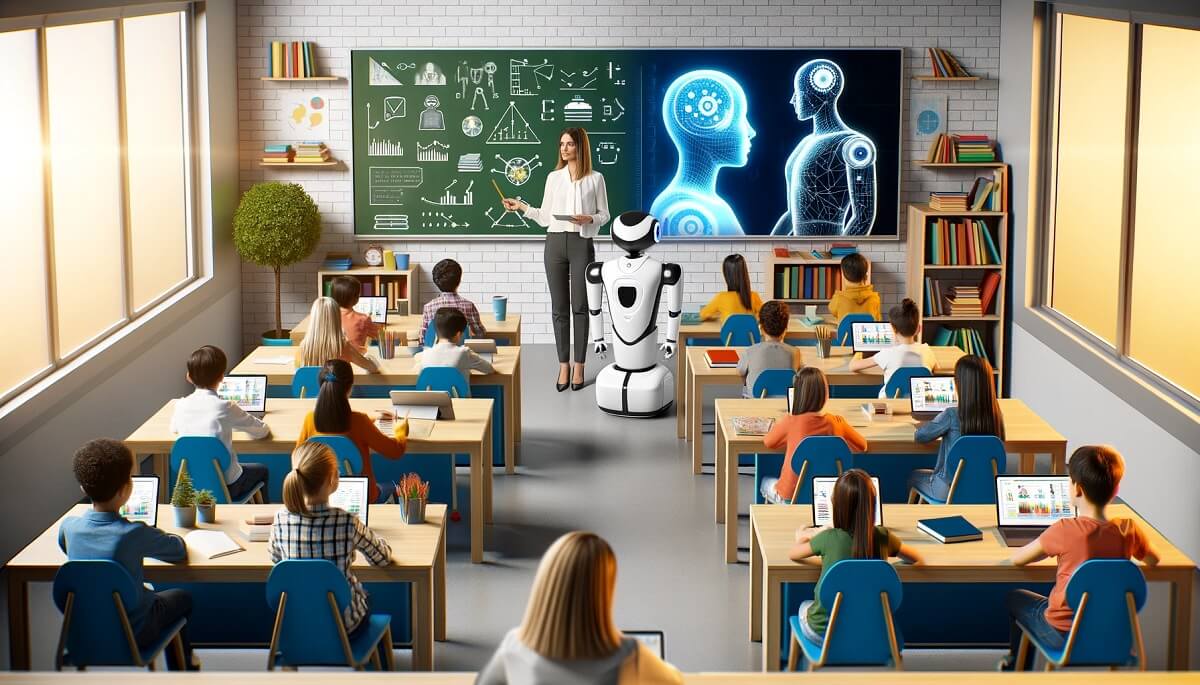
Teachers vs AI in the Classroom: Which Is Better?
As technology continues to evolve, its integration into various aspects of life, including education, becomes inevitable. One of the most debated topics today is the role of teachers versus AI in the classroom. Both have unique advantages and limitations that can significantly impact the learning environment. This blog explores the comparative benefits and drawbacks of having human teachers versus AI in the classroom, offering a comprehensive view of the subject.
Introduction
The Rise of AI in Education
Artificial Intelligence (AI) is rapidly transforming the educational landscape. AI-driven tools and applications are being developed to assist in personalized learning, providing data-driven insights, and making education more accessible. From intelligent tutoring systems to adaptive learning platforms, AI is becoming a significant player in the educational sector.
The Importance of Teachers in Traditional Education
Despite the advancements in AI, the role of teachers remains crucial in traditional education. Teachers bring a human touch that is vital for emotional and social development. They are not just educators but also mentors and role models who can inspire and guide students.
Benefits of Teachers
Emotional Intelligence and Empathy
Teachers possess emotional intelligence and empathy, which are essential in understanding and addressing students' individual needs. They can offer support, encouragement, and motivation, helping students overcome personal and academic challenges.
Adaptability and Personalized Interaction
Teachers can adapt their teaching methods based on the classroom dynamics and individual learning styles. This adaptability ensures that each student receives the attention and support they need to succeed.
Role in Developing Social Skills and Critical Thinking
Teachers play a significant role in developing students' social skills and critical thinking. They facilitate discussions, encourage collaborative projects, and create an environment where students can learn from each other and develop essential life skills.
Advantages of AI
Personalized Learning and Adaptability
AI-driven tools can provide personalized learning experiences tailored to each student's pace and level of understanding. These tools adapt to students' needs, offering customized resources and exercises that can enhance learning outcomes.
Data-Driven Insights for Improving Educational Outcomes
AI can analyze vast amounts of data to provide insights into students' performance and learning patterns. These insights can help educators identify areas where students are struggling and adjust their teaching strategies accordingly.
Accessibility and Scalability
AI can make education more accessible, especially in remote or underserved areas. AI-driven platforms can deliver quality education at scale, reaching students who might not have access to traditional classroom settings.
Limitations of AI
Lack of Emotional Connection and Empathy
One of the significant drawbacks of AI is its inability to provide emotional support and empathy. While AI can offer personalized learning experiences, it lacks the human touch that can motivate and inspire students.
Potential for Bias in AI Algorithms
AI algorithms can sometimes reflect the biases present in the data they are trained on. This bias can lead to unfair or unequal treatment of students, potentially impacting their learning experience and outcomes.
Dependence on Technology and Potential Issues with Accessibility
Relying heavily on AI can lead to issues with accessibility, especially in areas with limited technological infrastructure. Additionally, technical problems or failures can disrupt the learning process.
Limitations of Teachers
Potential for Burnout and Inconsistency
Teachers are susceptible to burnout due to the demanding nature of their job. Burnout can lead to inconsistencies in teaching quality and affect students' learning experiences.
Limited Scalability and Personalized Attention
Unlike AI, teachers cannot scale their efforts to reach a large number of students simultaneously. Providing personalized attention to each student can be challenging, especially in large classrooms.
Subject to Human Biases
Teachers, like all humans, can have biases that may influence their teaching methods and interactions with students. These biases can affect the fairness and inclusivity of the learning environment.
Case Studies/Examples
Successful Integration of AI in Classrooms
Several schools have successfully integrated AI into their classrooms. For example, AI-driven platforms like Carnegie Learning have been used to provide personalized math tutoring, leading to improved student performance.
Instances Where Human Teachers Excelled Over AI
In contrast, there have been instances where human teachers have excelled in areas where AI falls short. For example, during the COVID-19 pandemic, many teachers went above and beyond to support their students emotionally and academically, showcasing the irreplaceable value of human connection.
Conclusion
Summary of Findings
When comparing teachers vs AI in education, it's clear that both have unique benefits and limitations. Teachers bring emotional intelligence, adaptability, and the ability to foster social skills and critical thinking. On the other hand, AI offers personalized learning, data-driven insights, and scalability.
Future Outlook on the Coexistence of Teachers and AI in Education
The future of education will likely see a coexistence of teachers and AI. By leveraging the strengths of both, we can create a more effective and inclusive learning environment. AI can supplement traditional teaching methods, allowing teachers to focus on areas where human interaction is most needed, while AI handles repetitive tasks and provides personalized learning experiences.


